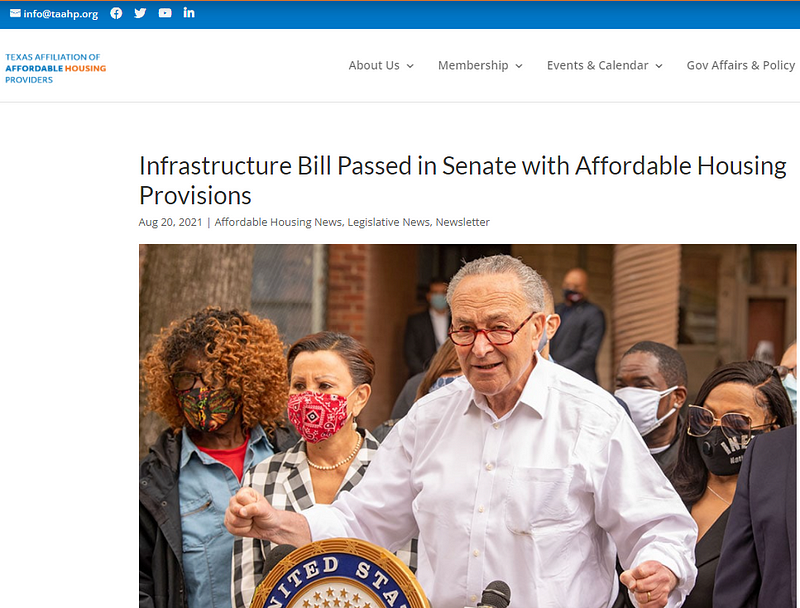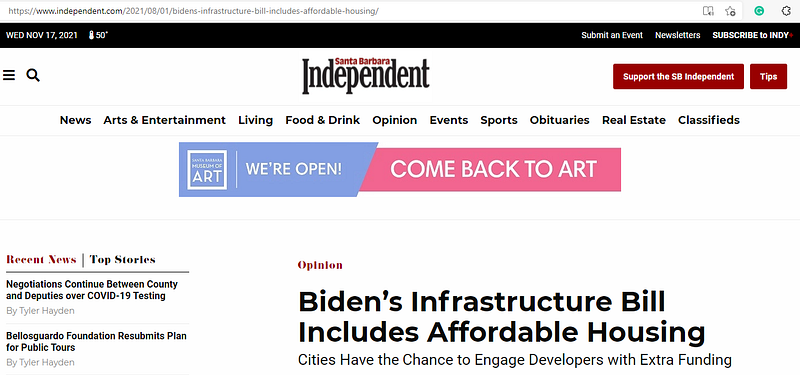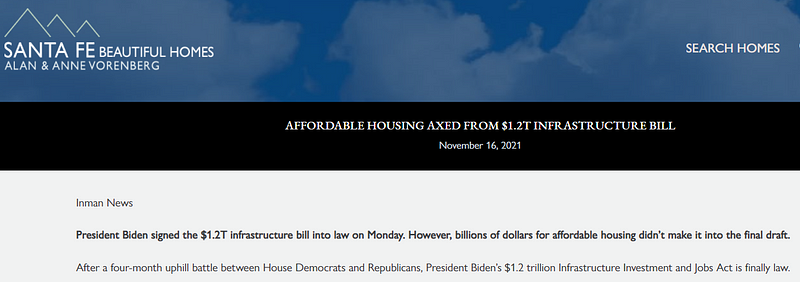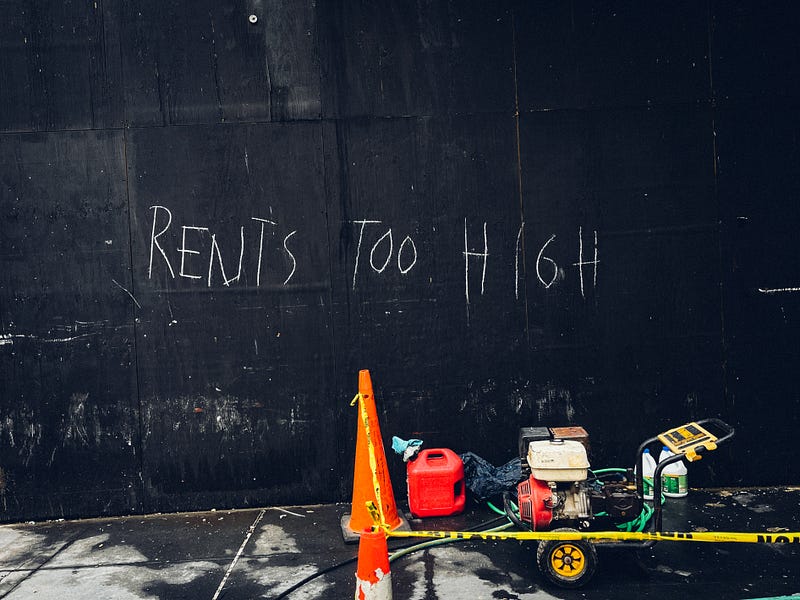The bipartisan infrastructure bill is finally signed — does it help with housing shortage?
As many of my readers and clients know, my wife and I lived in New Mexico in the past and had owned real estate investments there. I always like to maintain relationships and exchange information, even after moving on to new locations or projects, etc.
You probably heard across all media and social media channels, the bipartisan infrastructure bill finally passed with lots of fanfare.
In case you are wondering what’s in it, here is a list the “Santa Fe Beautiful Homes” crew put together (also available on many other platforms and articles):
- $110 billion for roads, bridges, and major infrastructure projects
- $16 billion for major projects that don’t qualify for other sources of funding, such as grants
- $11 billion for transportation safety
- $1 billion for the redesign of street grids in predominantly minority communities
- $39 billion for public transit
- $66 billion for passenger and freight rail
- $12 billion for intercity rail service partnership grants
- $65 billion for nationwide broadband internet access
- $42 billion for ports and airports
- $7.5 billion for zero- and low-emission buses and ferries
- $7.5 billion for a nationwide network of plug-in electric vehicle chargers
- $65 billion for electric grids
- $105 billion for water systems
- $21 billion for Superfund and brownfield site clean up
If you read that list carefully, as I did, I realized something I expected to be part of it was missing.
Look at the list of these headlines and pay attention to the publishing date:





So even yesterday the Santa Barbara Independent newspaper was still claiming that there was a provision for affordable housing in the bill.
The final draft is noticeably missing much of Biden’s plans to address the affordable housing crisis, which included $213 billion to produce, maintain and retrofit more than two million housing units and $40 billion to improve the nation’s public housing.
Well, when you look at the list above you’ll see it’s been removed.
How did this happen when those who initiated this bill said not long ago:
“Millions of families pay more than half their income on rent, and home energy costs are a significant concern for American renters as well,” the White House said of the bill in April. “And, across the country, people are struggling to purchase their first home.”
“This funding will address critical life-safety concerns, mitigate imminent hazards to residents, and undertake energy efficiency measures which will significantly reduce ongoing operating expenses,” it added in reference to its public housing proposals. “These improvements will disproportionately benefit women, people of color, and people with disabilities.”
Obviously, housing is not really infrastructure anymore. My school teachers must have taught me wrong.
What did those in power say about this omission that could have helped people struggling with high home prices and rapidly increasing rents?
The politicians didn’t say anything and the media did not ask them about it. That’s why you’ll barely find any articles about it, so far.
The National Association of Realtors President Charlie Oppler said:
“The nation faces critical challenges as Americans struggle to meet their mortgage obligations, find affordable housing amidst a supply shortage, and confront a widening homeownership gap among racial groups.”
Several housing advocacy groups have released similar statements on social media and asked the Biden Administration to deliver on its promises regarding down payment assistance and other affordability measures.
“The infrastructure deal will add infrastructure-related jobs to the economy, but the NHC finds that in many places, homeownership will be out of reach for these workers,” the National Housing Conference tweeted on Monday. “However, with targeted down payment assistance, access to homeownership could be expanded.”

So what does this mean for us as investors in real estate?
I think we have to realize that prices will keep increasing, both for purchases and for rent.
If you already own properties and are building a passive income portfolio this is fundamentally good news.
There are two risks to keep an eye on that should not be underestimated:
- Inflation will make it harder and harder for us to find new properties to purchase that perform well as prices increase but the rent does not keep up. In turn, that also means we would need to have more properties in our passive income portfolio to reach the Time Freedom Point where we no longer have to exchange time for money or have a job and can live off the passive income our properties generate. This part impacts our ability to reach our goals.
- With no government support and otherwise galloping price inflation people will have a hard time affording rising rents. It has become common to always look for a scapegoat — someone to blame for one’s misery. This could start to be more and more the landlord. Yes, people don’t like government and politics. The people working in those fields already have the lowest ratings for job approval or overall appreciation, so they can’t fall much lower. Good landlords who offer a nice property for a reasonable rent (reasonable for the market conditions) are in a much better position than politicians, but we have to be prepared that people and the media will start blaming landlords and real estate investors for their struggles to afford housing.

In summary we learned:
- The promises of the government are worthless — we knew that all along but this adds another example and confirmation.
- Housing is no longer infrastructure, and now things like electric mobility systems, ports, broadband internet come before housing — go figure.
- We have to be prepared for the consequences of this misguided omission of funding for housing as it will probably be turned into our fault as investors and landlords.
What to do next?
These are not the results we were hoping for but they should not discourage anybody to build a passive income portfolio and get out of the rat race. We are here and happy to mentor you if you like to find a successful path through the jungle of real estate investing.

